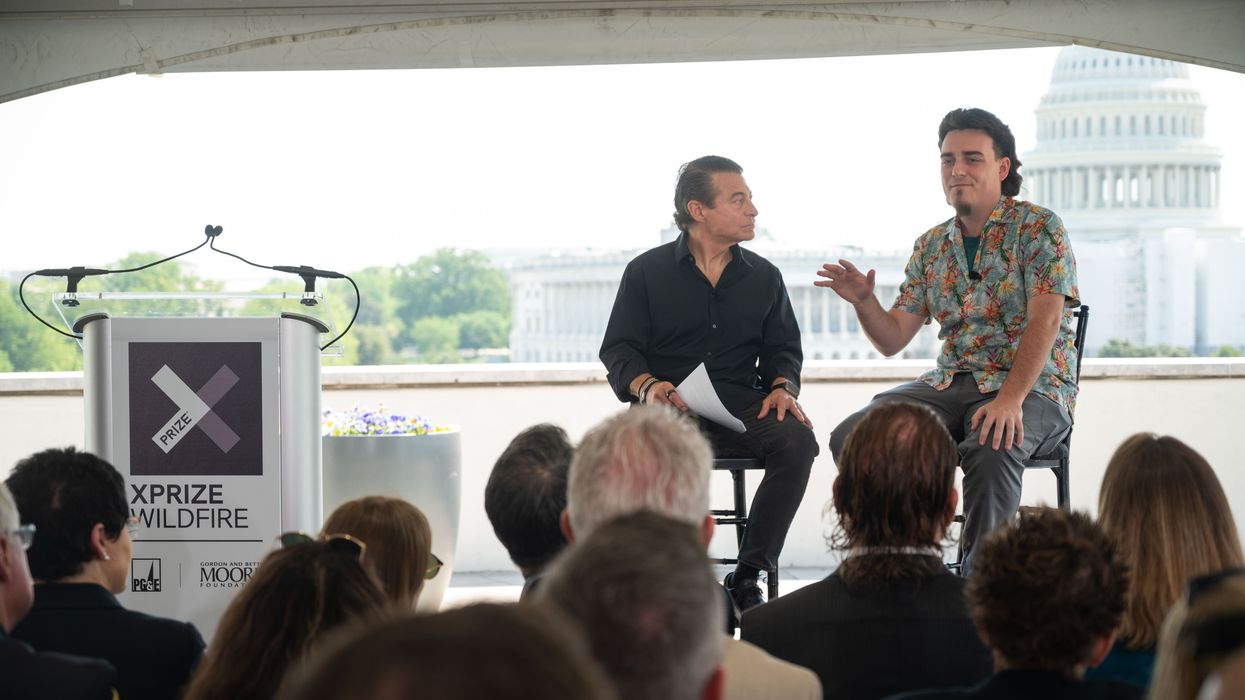How XPRIZE Plans To Use Competition To Solve California’s Wildfire Crisis
Decerry Donato is a reporter at dot.LA. Prior to that, she was an editorial fellow at the company. Decerry received her bachelor's degree in literary journalism from the University of California, Irvine. She continues to write stories to inform the community about issues or events that take place in the L.A. area. On the weekends, she can be found hiking in the Angeles National forest or sifting through racks at your local thrift store.

This is the web version of dot.LA’s weekly newsletter. Sign up to get the latest news on Southern California’s tech, startup and venture capital scene.
In 2021, the Associated Press reported that California purchased a dozen new Sikorsky Firehawk helicopters—at $24 million a piece. The helicopters can operate at night, store 1,000 gallons of water, refill the tank in under a minute and carry 13 firefighters. But considering in 2022, the California Department of Forestry and Fire Protection detected 7,490 wildfires throughout the state that burned over 362,000 acres from Los Angeles county all the way to the Sierra Nevada mountains, it’s still not enough.
Enter XPRIZE, a Culver City-based organization that’s using competition to spur innovation in wildfire mitigation technology. Their latest is XPRIZE Wildfire, a four year competition centered around advancing technologies to help detect and combat wildfires.
“Not enough of our best people are focused on solving hard, impactful problems like wildfires,” defense technology startup Anduril founder Palmer Luckey said. “Most engineers who are equipped to solve today's most dangerous problems are working at big technology companies on sexier products with better economic incentives and higher profit margins than most industries.”
The former Oculus VR co-founder is the first registrant to join XPRIZE Wildfire in hopes of winning the $11 million prize awarded to the most innovative team.
“Anduril has been working on anti-wildfire technology since the start of the company because I have long believed that very small amounts of money can be used to deploy new technology that ends this once and for all,” said Luckey. “The level of government involvement on this prize shows that other people finally agree!”
Established companies and teams as young as high school students can register. Early registration fee costs $500 and $1000 during the regular registration period.
To date, there are 37 teams registered with participants from all over the globe including Australia, Canada and London.
Though the initial fund for the prize money was raised by a handful of companies including PG&E, Lockheed Martin and the Conrad N. Hilton Foundation, XPRIZE has also opened the fund to the public to contribute.
“We've received some funds so far,”Program Director Andrea Santy told dot.LA. “That is hopefully going to continue through the end of the prize. The funds that are raised will go towards the winners and really is to be able to help incentivize the teams.”
While the prize money is enticing, Luckey said that wasn’t his biggest motivator to register.
“I own a huge 60 Blackhawk that does mostly CalFire missions,” Luckey said. “I outfitted it with an internal carriage tank that carries about 8,000 pounds of water.”
And though he believes there’s no alternative to dropping that much water on a blazing wildfire, he says, “it cannot be the backbone of every response.” In part because Blackhawk helicopters can cost upwards of $40 million and require a ton of manpower.
For its part, XPRIZE has been in the competition development business for 30 years. They’ve built competitions around space exploration, biodiversity and conservation and health. But the latest will be their first foray into wildfire detection.
The wildfire competition is split into two different tracks. The first is the space based detection track and will require teams to build a solution that will be able to detect all the fires in areas as large as some states and countries in under a minute. In addition, as part of this first track, Santy said another requirement teams need to account for is their technology needs to have the ability to transfer the data it gathers to firefighters at two ground stations within 10 minutes. Teams who opt for this track will have 22 months to complete their product.
“While detection has improved over the past decade, there's still a lot of it that's not as accurate as we need it,” Santy said. “The scale isn't as close to the resolution and so we want to be able to identify these fires in real time.”
The second option is the autonomous wildfire response track. For this one, teams have 10 minutes to suppress a high-risk fire in a 1000 km2 area autonomously, whether that’s using drones or robotics.
“There are multiple rounds of verification and testing,” Santy told dot.LA. “And so we [her team] want to make sure that we've got all of that mapped out and have everything scheduled. So that's a lot of what we're doing and safety is our top priority for this prize.”
- The Climate Crisis Is Changing How LA VCs Invest — Here's How ›
- Elevation Ventures Is Raising $50M for a Climate-Focused Tech Fund in SoCal ›
- Here’s the Latest on Fifth Wall’s Early-Stage Climate Tech Fund ›
Decerry Donato is a reporter at dot.LA. Prior to that, she was an editorial fellow at the company. Decerry received her bachelor's degree in literary journalism from the University of California, Irvine. She continues to write stories to inform the community about issues or events that take place in the L.A. area. On the weekends, she can be found hiking in the Angeles National forest or sifting through racks at your local thrift store.





